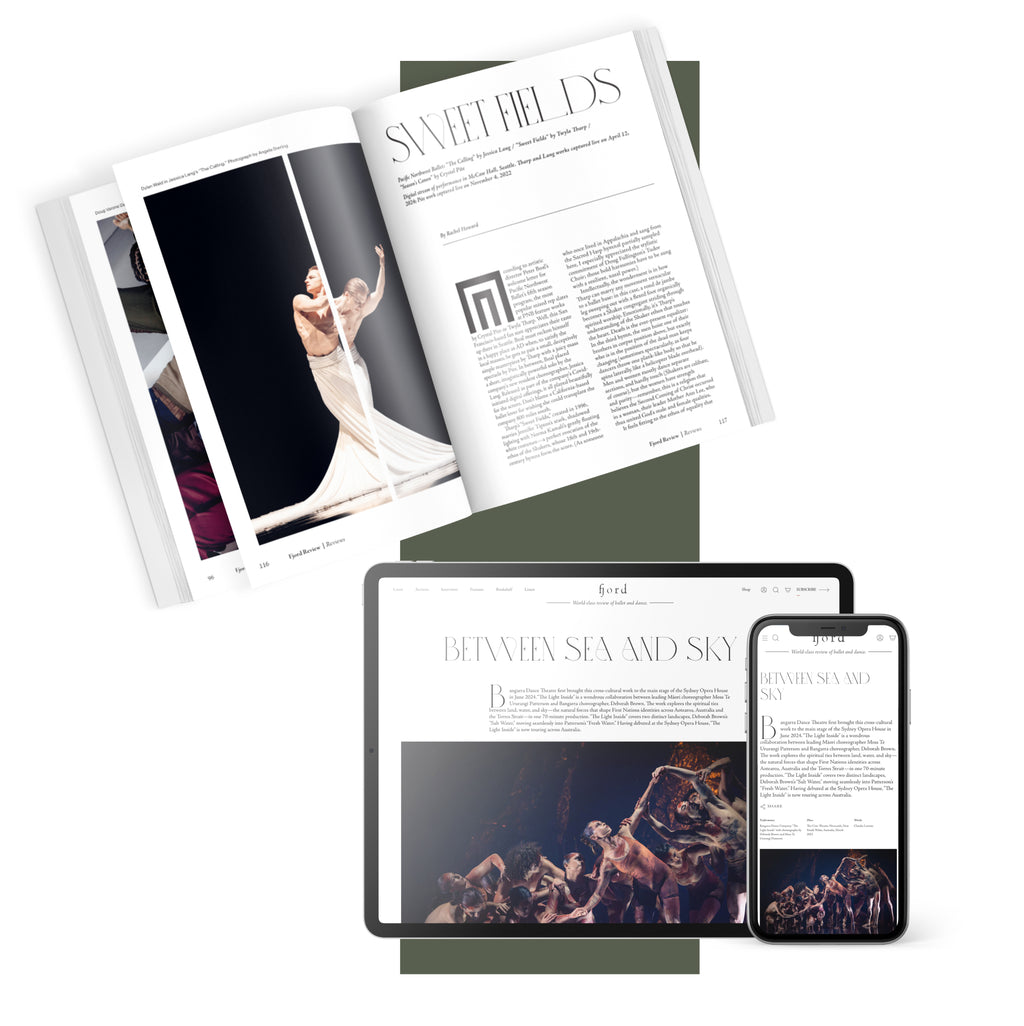In “Frontera,” director and choreographer Dana Gingras approaches themes of migration and displacement, and the ubiquitous surveillance of modern technology, with a tight structure resembling a palindrome.
This fraught transition—which felt like the center of a sequence or the point at which the work folds in on itself—was one of several moments in this dance where Gingras’s highly physical choreography was perfectly matched to the lighting design by United Visual Artists. Their inventive collaboration set the conditions inside Brooklyn Academy of Music for a total throw down from both the dancers and the musicians of the band Fly Pan Am.
The sounds of crickets, the ocean, and some fuzzy kind of feedback accompany the entrance of the dancers and what seems to be a walking score. Tracing the edges of the stage, the dancers follow each other, making sharp right turns. Eventually, there is congestion upstage as one woman reverses course, and bodies begin to pile up against her. Eventually the pressure forces one dancer to pop out of line.
Meanwhile, snippets from field recordings by Dave Bryant play in a few languages. By the time it gets to someone speaking English, it is clear they recount migration tales. Other anecdotes will be heard on the other side of the work, just as a version of this walking pattern and other dance and light cues will return: a woman tracing sharp lines in the air with her arms as she leans back into an impossible knee hinge, bringing her torso near parallel with the floor and a man dressed in black with a target of white light illuminating his back, dragging the beam across the stage.











comments